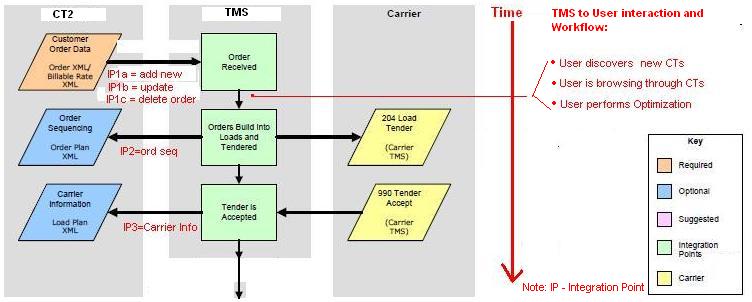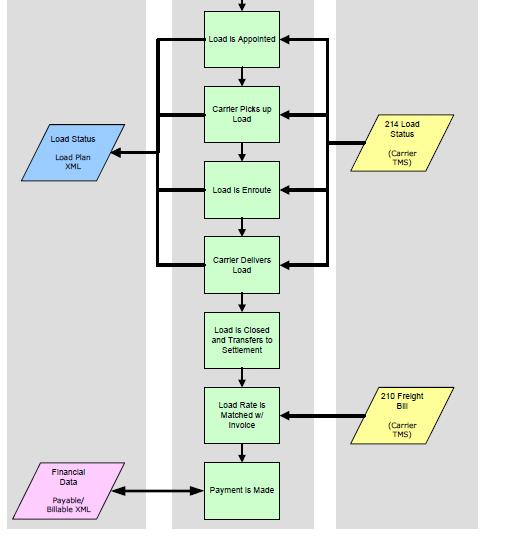Requirements for EDI to TMS
From UG
(Difference between revisions)
(→High level view of Workflow) |
(→About) |
||
| Line 3: | Line 3: | ||
== About == | == About == | ||
This is a Analysis / Requirements wiki for EDI to TMS proj | This is a Analysis / Requirements wiki for EDI to TMS proj | ||
| + | |||
| + | == Glossary == | ||
| + | |||
| + | '''IP''' - Integration Point | ||
== Introduction == | == Introduction == | ||
Revision as of 16:55, 19 July 2010
Contents |
About
This is a Analysis / Requirements wiki for EDI to TMS proj
Glossary
IP - Integration Point
Introduction
Core Business Need: Jaguar needs ability to optimize truck domestic shipments:
- create optimal loads, cost, routs, etc
- automate tariffs, communication with carriers
Above features are normally present in TMS software.
To achieve that it was decided:
- buy and use existing TMS solution (phase 1) - this project
- gradually add these features to CT2 (phase 2) - another project
To complete phase 1 we need to implement:
Vendor evaluation
Currently there are 2 systems we are considering:
- from Descartes
- from Lean Logistics
Functionality Overview
In a nutshell:
- shipment record will be created in CT2 and forwarded to TMS through EDI
- in TMS Jag oper will run optimizations
- TMS sens bids to carriers
- one carrier accepts the bid and start moving shipments
- carrier submits updates into TMS (example: actual pickup date)
- update above will be forwarded into CT2 through EDI
See also Integration Points.pdf attached to 2183.
See Figure below:
Figure Integration Points
Workflow
High level view of Workflow
- Numbers of CTs gets approved by CT2 Planner user
- CT2 sends info about these CTs to TMS (IP1)
- discover them in TMS
- browse them in TMS
- "route" them in TMS
- option 1: use optimization module
- option 2: manually optimize



